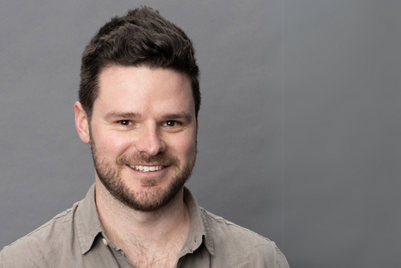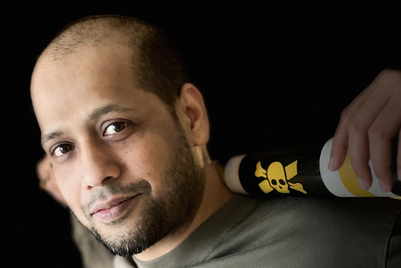
The coolest creatives. The hottest parties. Sensational seminars. Never-ending networking (read gossiping). Silver-haired legends. Shiny gold Lions. Cocktails, mocktails and ponytails. The 60th edition of the Cannes Lions Festival was all this and more.
More, I say, for me and my classmates in the Young Lions Creative Academy. Away from the chaos of the Palais, we were cooped up in a silent corner along with the other academies. Not to say that our classroom and the conversations were any less chaotic. Belonging to 17 different countries, we created a melodious cacophony. In different accents.
The academy, conducted by Bob Isherwood (ex-worldwide creative director of Saatchi), had invited applications a couple of months ago. After meticulously writing the covering letter and attaching the work samples, I had forgotten all about it. Only that I seemed to refresh my inbox more often. So when the mail with the confirmation message finally arrived, it came with several other attachments. The initial excitement, the agony over the money, the endless documentation process, the nail-biting wait for the visa approval and finally, the happy journey to Nice Cote d’Azur.
Cut to the 16th of June. 8.30 am. The first set of goose bumps promptly touched base at the sight of the #canneslions billboard. After the registration and a frantic hunt for the academy, the classroom finally showed itself. Bob kick-started the academy by saying we were not going to make ads in the next seven days. And I knew we were up to something good here.
Lectures by legends
Our schedule was littered with the names of legends. We ogled at them, observed them and secretly envied them that they had everything going for them until the moment they spilled the beans. That they all had fought the system and their own will at times, to overcome the temptation to give in and do bad work.
A close-up of the photographer-Goddess Annie Leibovitz and a question and answer session with Sir Alan Parker later, we realised that the only way to make sure you never drift from what you are supposed to do is to know exactly what you are doing. And a legend like Sir Alan Parker saying that you are never too good to better yourself, stirred some cells on the upper floor. Creative genius turned businessman, David Droga compared the creative game to chess. Lose your pawns and retain the king. That way the client is pleased and you still get to do good work.
I don’t know if it’s right to call the session with George Lois, a lecture. It was shock at first sight. Then admiration and inspiration followed. A man in his eighties, the moment he started speaking about his work while showing some of it, he made us all 20-somethings feel terribly old.
Soft skills that left a deep impact
While the legends chiselled our thinking, the academy had its share of mind-altering sessions by other brilliant speakers. For instance, Janet Kestin, ex-CCO of Ogilvy, Toronto, showed us the difference between talking to a client and having a conversation with him. First, she formed teams of two and asked us to stare into the eye of our partner for a whole minute. The comfort level and trust this helped form, laid the foundation for our next exercise. We had to bare open our hearts to this total stranger. While one spoke, the other had to listen with mouth shut. I said superficial things at first but in the absence of a reaction from my partner, a minute later, I found myself saying things so deep that I would never have said otherwise. At the end of it, we concluded that often, we don’t let our clients speak. The moment they criticise our work, we jump in to defend and what follows is a series of reactions to what the other one has to say. Instead, Janet asked us to stay silent, let the client go to the root of his problem himself and buy our work without us having to sell it.
An interesting chat with Patrick Collister educated us on the four points of conflict we have with others – How we are wired, how we think, ho we see and what we say. Points that we need to keep in mind while we interact with the other departments in our agency and the clients while we sell our work. He said what we think is obvious is not even a point of consideration to someone sitting across the table.
The highlight was a lecture by Yonathan Dominitz from Mindscape. How would you react if someone told you that there were set patterns behind the Lion-winning campaigns across the world? While the first slide of his PPT shocked us, the ones that followed justified this mighty claim by actually demonstrating five of the many patterns he has tracked.
In the seven days, we attended lectures by the CEO of Cirque du Soleil, a storytelling workshop by Mary Lee Sjonell, the worldwide creative director of the Grey group, Tim Mellors and a host of other interesting personalities. At the end of a tired yet invigorating day, we always had one or the other thing to look forward to. We ended the day with an award show, one of the beach parties or simply discovered the beauty of Cannes, one square foot at a time.
The 24 other teachers
This article can’t be complete without the mention of my classmates in the academy. Here were people from 16 other countries that I had only seen on the world map. Day one, it was difficult to decipher their accents and pronounce their names. At the end of day seven, we were borrowing pens and laughing on the same lame jokes. Everyone spoke English differently but had the same things to say. Most importantly, all of us believed in the same thing. Doing good work. After all, that’s why each one of us had travelled thousands of miles to be where we were.
(The author is a copywriter at TBWA\India. She was among those selected to attend the Young Lions Creative Academy at the Cannes Lions International Festival of Creativity 2013. Views expressed are personal.)





.jpg&h=268&w=401&q=100&v=20250320&c=1)
.jpeg&h=268&w=401&q=100&v=20250320&c=1)
.png&h=268&w=401&q=100&v=20250320&c=1)
.png&h=268&w=401&q=100&v=20250320&c=1)

